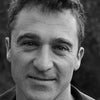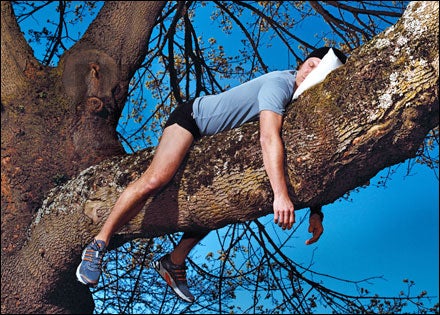AMERICANS LIKE TO BRAG that they can run on six hours of sleep. Funny, because anything less than eight turns me into the type of person who will throw haymakers in the grocery checkout line. It may sound spoiled to complain about oversleeping, but for a 29-year-old runner and biker like me, the notion of having to spend one-third of my life in bed seems criminally unfair. Early this year I began to worry that I might be prone to too much sleep, so in March I paid a visit to the California Center for Sleep Disorders, an unassuming clinic in a Fremont, California, strip mall. That night I found myself lyingÔÇövery much awakeÔÇöin a windowless room with 15 electrodes attached to my body, straps around my chest, and a plastic cannula (a tube to monitor breathing) up my nose.
STRATEGIES: THE NAP
Unjustly maligned by Americans for too long as a sign of laziness, the nap is finally getting some respect. According to Sara C. Mednick, author of Take a Nap! Change Your Life, midday sleep can improve everything from your sex life to your learning capacity. And a 2003 Harvard study led by Mednick showed a 90-minute nap to be just as effective in helping the mind process new visual skills as a full night s sleep. Here s how to do it right.1. Naps are not a long-term replacement for missed sleep. You need four to five consecutive cycles of sleep per night. So sleep regularly, and then take a nap if you re tired. If you re not, don t.
2. Limit yourself to one nap a day. “Anything more can mess with your nocturnal sle…
It turns out that I’m one of many people willing to go to such extremes to learn about sleep. With so many of us shorting ourselves on restÔÇöthe National Sleep Foundation reports that some 50 million of us have chronic sleep problems, and the ┬á shows that, on average, we get six hours and 40 minutes of shut-eye nightlyÔÇöthe sleep-correction industry is booming. Americans shelled out more than $3 billion for 54 million sleeping-pill prescriptions in 2007, and the number of accredited sleep clinics like the one I visited has quadrupled since 1996. The upshot of all this attention? While researchers have yet to answer the Big OneÔÇöthe question of why we need sleep to begin withÔÇöwe understand better than ever the effects of inadequate rest. And the results go far beyond the familiar cycle of coffee in the morning and sleep aids (or Scotch) at night.
To wit: As little as 20 hours without sleep leaves you with the same impaired attention and slow reflexes of someone who is legally drunk. Chris Eatough, six-time winner of the , says that during a day-long competition, his vision will occasionally stop. “I’ll be flying downhill with rocks and trees to dodge,” he says, “and I’ll get a snapshot of the trail that doesn’t change for four or five seconds.”
New research also suggests that insufficient rest wreaks havoc on your emotions and intelligence. Last October, Matthew Walker, a sleep researcher at the University of California, Berkeley, found that when he showed people unpleasant images, such as attacking sharks and vipers, sleep-deprived subjects had a 60 percent stronger emotional response than well-rested ones. Sleep also appears crucial to learning and memory: Walker found in 2008 that we’re about if we haven’t had sufficient sleep beforehand. “It’s not practice that makes perfect,” he says. “It’s practice with a night’s sleep that seems to make perfect.”
The list goes on: suggests that those who don’t sleep enough have higher stress levels and an increased risk of heart attack. In 2004, researchers at the University of Chicago Medical Center found that sleep deprivation screws with the hormones tied to appetite and insulin resistance. Translation: Not sleeping can make you fat and put you at a higher risk of Type 2 diabetes.
Sounds daunting, especially since most of us don’t get those elusive eight hours. (Think your Red BullÔÇôcharged system needs less? You’re wrong. As you tire, your perception of what’s normal changes, and you don’t recognize that you’re impaired.) But here’s the good news: There are plenty of non-pharmaceutical methods for improving sleepÔÇöand you don’t need to shove a tube up your nose to figure out what to do. (That might not help much. I slept horribly at the clinic, waking up 14 times per hour, above the normal rate of zero to five.) Set up your bedroom the right way, eat well, and exercise with the end of the day in mind and you can ditch that third cup of coffee. Your body knows how to sleep. Your job is learning how to get out of the way.
Stop Counting Sheep
And start sleeping better by following these rules
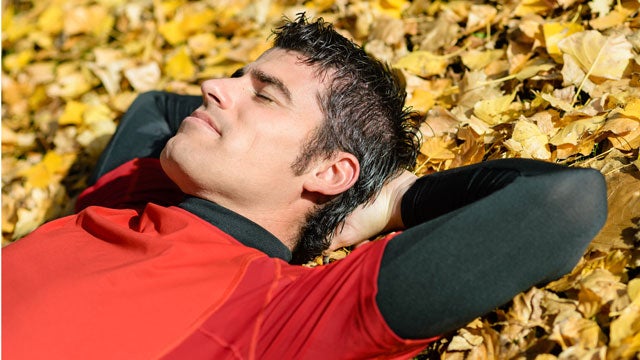
sleeping advice
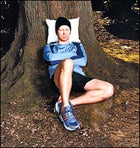 Think naps will do the trick? Nighttime sleep is cumulative, and after a while your twenty-minute power naps won’t do you much good.
Think naps will do the trick? Nighttime sleep is cumulative, and after a while your twenty-minute power naps won’t do you much good.1. Be consistent. Nighttime sleep loss is cumulative, and naps won’t fix the problem in the long term. “If you’re regularly going to sleep at midnight and waking up at 5 a.m., by the third day, you can’t function at your normal level,” says Dr. Jerrold A. Kram, founder of the California Center for Sleep Disorders. Do your best to go to bed and wake up around the same time each day, even on weekends.
2. Pay attention to lighting. Natural rays have a strong effect on the body’s circadian rhythm, so open the shades when you wake upÔÇöthe sun will make you feel alert. And because light suppresses the production of the hormone melatonin, which tells your body when it’s nighttime, it’s a good idea to avoid bright artifical light right before bed.
3. Finish exercising at least two hours before bedtime. One of the easiest pharmaceutical-free ways to improve your sleep is to keep your core temperature low at night. If you ride a bike or run within two hours of sleeping, your temperature will be too high for optimal sleep and your brain will be overstimulated. A cheat for the sleepless: Work out in the late afternoon. Your temperature will drop right around the time you want to hit the sack, making you feel tired.
4. Take a bath. According to Matthew Walker, a sleep researcher at the University of California, Berkeley, a warm bath several hours before bed will produce an effect similar to that of an afternoon workout. “Your core body temperature will drop significantly after the bath, which will help you get to sleep,” says Walker.
5. Eat right. Stuffing yourself too close to bedtime can make it hard to fall asleep, and fatty foods can cause indigestion or heartburn. But if you have a favorite light snack that helps you nod off, stick with it.
6. Watch your toes. According to , foot temperature affects your sleep more than the temperature of any other body part. So if you find yourself sleeping poorly, kick the covers off your feetÔÇöor put on some socks if you’re cold.
7. Kill the nightcaps. Booze before bed might steady the nerves and knock you out, but it also leaves you far more likely to wake up in the middle of the night. Cigarettes, which are stimulants, are also a bad idea.
8. Don’t stay in bed if you can’t fall asleep. Go into a different room and listen to soothing musicÔÇöSigur R├│s or Norah Jones should do. Or try reading Finnegans Wake. Go back to bed when you feel sleepy.
9. Empty your mind. Keep a notebook at the side of your bed so you can scribble when your thoughts are racing late at night. Once you have that opening line of your novel down on paper, you’ll sleep much easier.
10. But don’t work in bed. Your mind should associate your bedroom with rest and relaxation, not anxiety and stress. So reserve your bed for sleep and sex.
11. If all else fails, drugs. But not too much. See the next page for a user’s guide.
Behind Shut Eyes
A regular night's rest comprises four to five repeating 90-to-110-minute cycles, each of which consists of four phases of sleep. Here's a look at what happens after you hit the mattress.
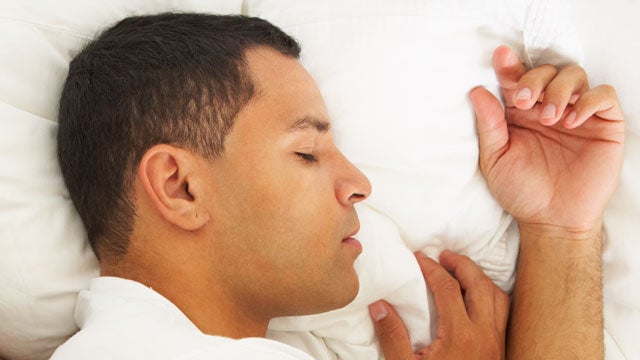
Stage 1: When you first lie down, you slip into this brief transitional sleep. You might experience involuntary muscle spasms, and if someone says your name, you’ll wake up.
Stage 2: You spend about half of your sleep in this stage, during which body temperature drops and breathing and sensory perception slow down. Research shows that this stage may help solidify neural connections related to skills that require motor memory, like riding a bike. Twenty-minute power naps consist mostly of Stage 2 sleep.
: During this deep slumber, breathing becomes slower and body temperature drops further. You’re unlikely to wake up if someone says your name, though you might go for a walkÔÇömost sleepwalking takes place during slow-wave sleep. If you’re overtired, your body will prioritize slow-wave sleep, pushing the other stages to the side.
: The rapid-eye-movement stage, during which you dream, typically takes place at the end of each sleep cycle. Brain activity becomes more intense and breathing and heart rate speed up. The body loses the ability to regulate temperature, so you don’t sweat or shiver. Researchers think REM sleep is associated with complex learning (like mastering the intricacies of a new language). Also, your muscles are temporarily paralyzed during REM, preventing you from acting out your wildest dreamsÔÇöusually a good thing.
A typical 90-minute sleep cycle: Stage 1, Stage 2, slow-wave, Stage 2, REM, Stage 2, slow-wave, Stage 2, REM
The Sleep Fix
Can't nod off without your Benadryl or just a liiiitle bit of Ambien? Here's some advice on how and when to self-medicate.
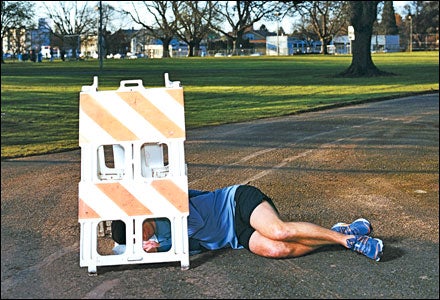
From the Doctor: Prescription drugs like Ambien, Lunesta, and Sonata can recalibrate work- or happy-hour-altered sleep schedules, but they’re best used short-term. Ambien, for example, targets receptors that inhibit brain activity, thereby sedating you. Many people find this very helpful and experience few side effects. Some people lose memory for the night and end up unconsciously raiding their refrigerators, having sex, or, after mixing Ambien with wine, ripping off their shirts and threatening to commit suicide, as a British man did on a transatlantic flight in 2005. If you’re just having trouble drifting off, try Rozerem, which shortens the time it takes to fall asleep, doesn’t sedate you, and doesn’t make you psychologically dependent (oh, yeahÔÇöAmbien, Lunesta, and Sonata can do that, too).
From the Counter: Tylenol PM and Benadryl make you sleepy with antihistamines, but they can leave you groggy the next day. “Benadryl doesn’t consistently work, and it has more side effects in many people than prescription drugs,” says Dr. Jerrold A. Kram, of the California Center for Sleep Disorders.
From Nature: The most popular natural sleep aid is FDA-unapproved melatonin, the hormone our bodies produce when it’s dark outside. While melatonin doesn’t sedate you, it helps your body recognize when it’s nighttimeÔÇöuseful if you work late on a computer or are trekking through Alaska in July. Another popular natural aid, , hasn’t held up in clinical tests.
From the Cow: Warm milk: probably a placebo; tastes good with honey.
Buyer’s Guide to the Mattress
Take this jargon-busting chart to the bedding store and watch the salesman squirm
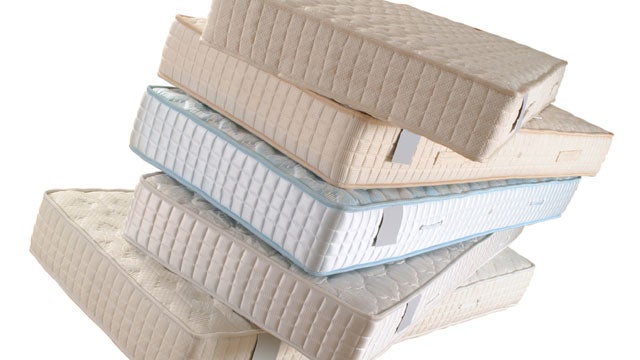
INNERSPRING (The mattresses made popular by the “S brands”: Simmons, Serta, Sealy)
What it is: Coil springs buried beneath foam, insulation, and cotton. Accounts for 90 percent of the industry’s sales.
What you need to know: Lie down on it for ten minutes, then buy based on comfort. Don’t pay more than $1,500. Price range: $200ÔÇô$65,000
FOAM (Tempur-Pedic, Simmons ComforPedic)
What it is: Everything from standard latex to the NASA-developed visco elastic (memory foam) made popular by Tempur-Pedic.
What you need to know: Conforms to your body, relieves pressure, can allegedly store body heat and cook you. Price range: $800ÔÇô$7,000
AIR (Select Comfort, Comfortaire)
What it is: Essentially the same as an innerspring bed, only with a balloon core instead of coils.
What you need to know: Reduces pressure points and late-night discomfort. Price range: $600ÔÇô$5,000
SLEEPING GIANT (Sleeping-pad cover by Big Agnes)
What it is: A camp-worthy sleeping-pad cover made out of memory foam.
What you need to know: It’s a for the backcountry ($60).

